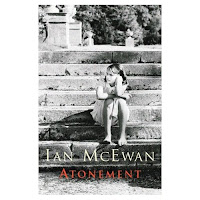ELEGY FOR IRIS
By John Bayley
Publisher: Picador, 288 pages
(ISBN: 978-0312421113)
WHETHER you are of the opinion that Iris Murdoch’s novels are full of subtle wisdom, graceful prose and illuminating insight or that her style is deliberately, snobbishly pedantic and ponderous, you still can’t deny that her writing reflects a mind that is at once complicated and lucid, vigorous and tranquil – to be sure, a beguiling if somewhat daunting combination of qualities.
That such a brain, teeming with ideas and bristling with life, should be destroyed by Alzheimer’s disease is something that would strike most of us as particularly unfair, tragic and ironic.
Murdoch was diagnosed with the mentally debilitating condition in the mid 1990s. Prior to her illness she was a scholar and philosopher, an admired and respected essayist, poet and playwright, and the author of 26 critically acclaimed novels. She was also a beloved wife and this fact remained unchanged until her death in 1999.
Elegy For Iris – also available as Iris: A Memoir of Iris Murdoch (Abacus) – allows us a close-up view of the woman, her work, her life and marriage. It is a personal viewpoint – her husband, teacher and critic, John Bayley, is the author and he presents Murdoch as he knew her and saw her.
His description of Iris reveals an eccentric individual (a hoarder of odds and ends – stones, sticks, empty bottles – who delights in swimming nude in rivers and forest ponds), both brilliant and naive, whose extraordinary life is littered with mundane details.
Murdoch counted among her close friends literary luminaries such as Elizabeth Bowen, Barbara Pym and Kingsley Amis. Her fans included Benedictine monks. She replied personally to every letter she received from her readers; she won awards, including the 1978 Booker Prize for The Sea, The Sea; she enjoyed living in a state of comfortable squalor, leaving crumbs in bed, rarely washing; she was made a Dame of the British Empire; she applied lipstick amateurishly, blotting her mouth with scraps of writing paper.
Bayley is, himself, not without quirks. In the early days of their acquaintance he convinces himself that Murdoch is unattractive in order to avoid the anguish of thinking that others find her sexually appealing. He invites her to a ball and is disconcerted and displeased when she accepts. He secretly tails an old professor, one of Murdoch’s many admirers, from her rooms back to his hotel. He stands in her street for long stretches of time, simply gazing up at her lighted window. Taken out of context, these actions may sound like those of a raving lunatic, but as part of the Bayley-Murdoch story, they are in keeping with the couple’s rather unconventional relationship.
“The more I got to know Iris during the early days of our relationship, the less I understood her. Indeed, I soon began not to want to understand her,” Bayley writes.
With every passing year he and Murdoch “move closer and closer apart”, enjoying the “solitude a deux” of marriage. They acknowledge and embrace each other’s differences, at times simply by keeping a distance and allowing a particular peculiarity or foible to flourish, free of comment and scrutiny. He is unperturbed by his inability to understand many of his wife’s inner thoughts. That he is granted the privilege of observing this enigmatic person at close range is alone a source of delight and, rather than feel alienated by her occasional remoteness, he draws strength from it, rejoicing in her mystery.
Later, during the height of Murdoch’s illness, this ability to accept without irritation and frustration the gap between their conscious states stands Bayley in good stead, not that he is never distressed or angered by Murdoch’s symptoms. Bayley relates the instances when he loses his temper and shouts at his wife, is verbally cruel, and even punches her arm. He is never defensive, never self-pitying, only matter-of-fact.
The last chapters of Murdoch’s life are, except where it concerns her as an individual, not unique. All of us face the truth they reveal – of life that will, with the passage of time, never mind the onset of sickness, be stripped of dignity, independence and comfort. We should be so lucky if, as in Murdoch’s case, there is someone there to remember us at our brightest, loveliest, most lovable.
Bayley does, and as much as he steers his tale unflinchingly through the darkest episodes of his wife’s life, he recounts humorously and with great enthusiasm and tenderness the good times, including the happy, peaceful moments the pair share because of, rather than in spite of, Alzheimer’s – watching Teletubbies together, reciting bits of doggerel to one another, Bayley typing in bed while Murdoch sleeps deeply beside him.
She was a beloved wife and this fact, as this book as well as a later one, Iris And Friends (Abacus), seem to show, remains unchanged despite her death.




